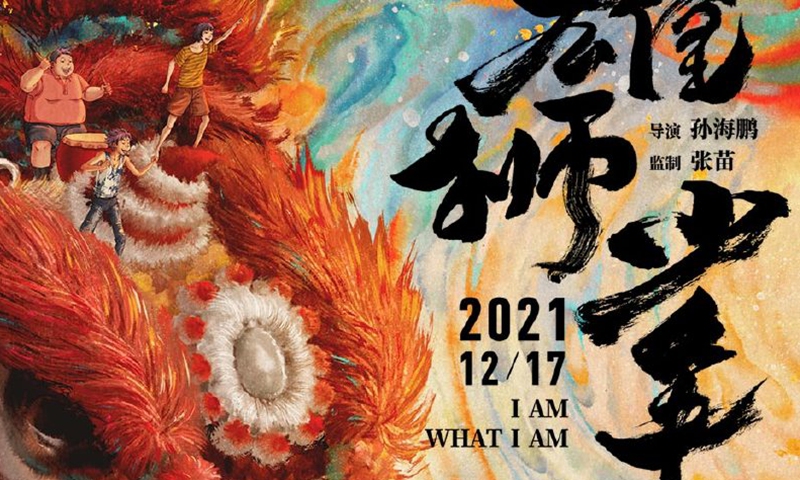
Poster of I Am What I Am
The design of the main characters in latest Chinese animated film I Am What I Am is designed to be real, and avoid beauty standards of online influencers and filter aesthetics, said the film's producer, after the main character's "slanted eyes" were criticized by some of feeding into Western stereotypes.
The film, released on Friday, revolves around a left-behind teenager who insists in pursuing his dreams despite difficulties and participates in lion dancing. Contrary to characters in previous animations who are usually handsome in looks, the protagonist A Juan has slanted eyes and a flat nose, leading to controversy among netizens.
Zhang Miao, film producer of I am What I am, told the Beijing News recently that the production team has been sticking to the realistic style of the film and he never regretted making such a design choice. On aesthetic design, the team avoids following the beauty standards of internet influencers and filter aesthetic.
Zhang said he was aware that making the character into a handsome figure would be safer and simpler, but he tried to explore the aesthetic in animation from an angle of reality.

Poster of I Am What I Am
The response to "slanted eyes" of the character shows that we lack aesthetic confidence and our aesthetic view of animation has been homogenized given the huge influence of Japanese and American animation, Zhang said, adding that the selection of such an ordinary boy perfectly depicts his spirit of strengthen and resistance to life.
If he looks like a rich or handsome kid, the audience may not be convinced that this is a true inspirational story, the film's director Sun Haipeng noted.
The film scored 8.3 on Maoyan film rating platform and some industry observers even predicted its box office would hit 2.5 billion yuan ($392 million).
Global Times



